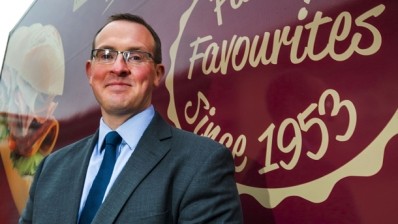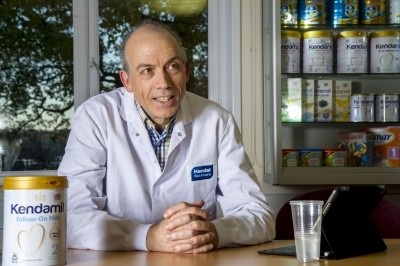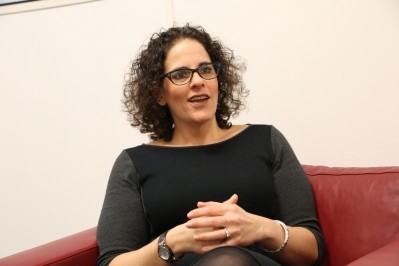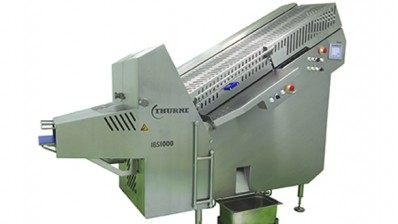Me and my factory
Direct Table Foods aims to boost pork productivity
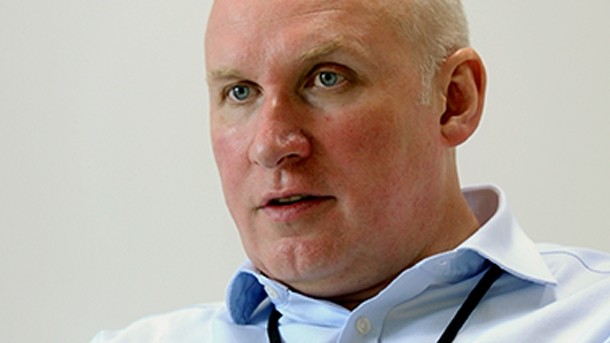
We are one of the biggest pork processing sites in the UK, producing an average of 1,000t of product a week.
Primarily, we make own-label products for a number of the main supermarkets, but we also have three branded ranges – Direct, Sizzling and Suffolk Crown.
Despite the challenges of the meat sector, we have managed to grow significantly in my 15 years here, both in volume output and sales.
Much of that success is down to the management team – and a number of staff – who have been here a very long time.
Our md, Anthony Stanton, has been here 44 years. In fact, Direct Table Foods (DTF), was first set up by his family when it was a butcher in London’s Smithfield Market – then known as Direct Table Produce.
Factory facts
LOCATION: Saxham Business Park, Bury St Edmunds, Suffolk. IP28 6RX
SIZE: 23,000m2
STAFF: An average of 600 across the year.
TURNOVER: £157.5M
MAIN PRODUCTS: Cured, smoked and sliced bacon. Lardons, bacon joints and pigs in blankets. Gammon joints and steaks, premium cured natural gammons and decorated Christmas joints.
CUSTOMERS: Retailers, foodservice and other manufacturers.
PRODUCTION LINES: Ten rasher lines, two gammon-steak lines, two gammon cutting/portioning lines, two tray packing lines, two vacuum packing lines, one grade-II packing line, one lardon dicing line, one pigs in blankets line.
TOTAL FACTORY OUTPUT: 1,000t a week.
Our two other directors have been at the company for 20 and 16 years. I think that’s a pretty rare situation – in the food industry at least.
I’ve worked in food all my life. My first part-time job was for dairy farmer/processor Hall & Sons, and then I worked for Express Foods during university.
I graduated with a chemistry degree from Imperial College London, and given my experience at the time, it was only natural I looked for a food industry job.
Graduate recruitment scheme (Back to top)
I joined the Sainsbury graduate recruitment scheme in 1987 and became a food technologist. My 13 years in retail helped me enormously when I moved into food manufacturing.
I got to visit a number of food factories throughout Europe, at a time when own-label was growing rapidly.
When we are able to find the time, we try to take team members on visits to other factories. It may be a meat company, or it may be something completely different.
It’s about opening staff up to new ideas and different ways of working.
Supporting and championing a number of trade organisations has also been a powerful networking tool, both for me and the company.
I’m currently halfway through a two-year term as chairman of the Provision Trade Federation. I’m also involved with the British Meat Processors Association and Institute of Food Science & Technology.
It’s a classic case of you get out what you put in – with Brexit looming, working with trade organisations is going to be important.
Since 1999, DTF has been owned by Danish pig farming co-operative Tican Group, which was subsequently bought by German meat processor Tönnies Group in February.
Burnt down in 2004 (Back to top)
We acquired nearby Lark Valley Foods in 1998 and operated out of that site before it burnt down in 2004 following an equipment fault.
However, luckily, we also had a site in Cuffley, Hertfordshire, which enabled us to continue until we opened this site in 2006.
We operate two main production shifts daily, and a night cleaning shift. A third of the products we turnout are made on-site – effectively, turning pork into bacon.
Bacon is cured in three main ways. The most straightforward method is the back cure, where the salt and nitrites are injected and the pork is put into an inline tumbler, before being vacuum packed into pouches at 2–5°C for four to five days. That’s your unsmoked back and streaky.
Tanker emersion curing involves putting the meat into a cage and covering it with brine, so it sits pickling for four days, adding to the flavour.
The third type is dry curing, where we rub the salts and sugars in by hand. This is the most premium method, and a growing area for us – up by 25% over the past three to four years.
We offer every cut of the pig, in smoked and unsmoked variations, and we are able to make a wide variety of cures – including sweet cures, such as maple or treacle. So there’s plenty of room to innovate.
Recent investment in slicing technology has allowed us to improve yields, reduce giveaway and increase productivity.
The meat goes through an infra-red scanner that takes a 360° volume metric image of the product, telling the machine its precise density.
Less than 1% (Back to top)
As a result, the giveaway on our most up-to-date bacon rasher production lines is less than 1%.
Another business development that I’m very proud of is our reduction in energy usage. Our biggest single project involved installing a heat recovery system that uses the energy from our refrigeration plant to heat water.
After installing it in 2012, our gas usage went down by 92%. Over the past seven years we’ve made a 27% energy efficiency gain – that’s kilowatts per hour of energy divided by tonnage.
We’ve already comfortably passed our 2020 climate change agreement, which is important for us as it means we can pay a reduced climate change levy on our utility bills.
Our production efficiency has also improved in recent years, but this figure is much harder to quantify.
As an example, we used to pack a product range for one particular retailer in crates, but then they asked for it to be put into shelf-ready packaging. So we had to put more labour into it. So, comparing like-for-like is tough.
Continuous improvement across the site is important for us. Before it was wound up, we worked with the Manufacturing Advisory Service on lean manufacturing principles. We also employ a continuous improvement manager.
Overall, I think running an effective manufacturing business is much like being part of a Formula 1 team. To be successful you’ve got to have a great car, a good driver, and fantastic support team.
With our factory and equipment, our staff and the management team that drive it, we believe we have all three.
Find out more about how the ops director has worked with retailers to minimise the audit burden following the horsemeat scandal in our exclusive online video.
Meanwhile, don’t miss the shortlist of finalists for the new Food Manufacture Excellence Award, the Me and my factory – editor’s choice award.
Personal
NAME: Rob Nugent
AGE: 50
DOMESTICS: Married, with four children.
OUTSIDE WORK: It’s a bit sad, but nearly everything I do revolves around food. I’m involved in a networking club in London called the Food Club International. The meetings are a chance for small businesses to share their problems. I also enjoy cooking and spending time with my family.
GREATEST ACHIEVEMENT: As chairman of the Provision Trade Federation, I was asked to give a speech at our Annual Dinner in February. With 800 people in the room, it was quite a daunting thing to do.
ADVICE TO YOUNGER SELF: Trust your instincts and follow them. And don’t eat so much!
